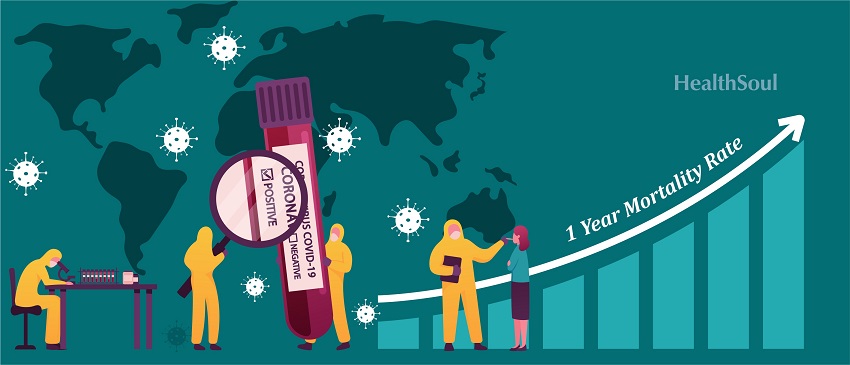Estimating Excess 1-Year Mortality Linked with the COVID-19 Pandemic

It goes without saying that the COVID-19 pandemic has had vast, and arguably unknown, impact on overall population mortality—from medical, economic, and societal standpoints.
It’s estimated, however, and postulated by a study published in PubMed.gov on May 12, 2020, that the excess number of deaths over 1 year under different COVID-19 incidence scenarios based on the different levels of transmission suppression and largely differing mortality impacts based on different risks for the disease.
This study sets out to create a simple model an online tool for understanding that predicted excess mortality over 1 year from the COVID-19 pandemic, taking into account factors like condition-specific factors, age, sex, and other underlying conditions.
The Population-Based Cohort Study: Understanding the Methods
The team behind this study conducted a population-based cohort stud that linked primary and secondary care electronic health records from England. The records examine individuals 30 years or older registered with a practice between 1997 and 2017.
The study estimated 1-year mortality in each condition, developing simple models of excess COVID-19 related deaths, assuming the necessary, relative impact of 1·5, 2·0, and 3·0 at differing infection rate scenarios, including full suppression (.0001%), partial suppression (1%), mitigation (10%0, and “do nothing” (80%).
This population-based cohort study aimed to develop an online public prototype risk calculator for excess death estimation.
The Results of the Study: What Happened?
So, what were the results of this population-based cohort study? For reference, of the 3,862,012 individuals that were included in the study, 50.7% were women, 49.3% were men, and it’s estimated that more than 20% of the study population was considered to be in the high-risk category (of which13.7% of them were older than 70 years and about 6.3% of them were 70 years or younger with at least one underlying condition).
In this study, it was found that the 1-year mortality in the high-risk population was estimated to be about 4.46%. It was also found that in full suppression scenario within the UK population, it’s thought that there would be two excess deaths (versus baseline deaths) with an RR of 1.5, four with an RR of 2.0, and seven with an RR of 3.0.
Alternatively, in a mitigation scenario, it was estimated that 18,734 excess deaths would take place with an RR of 1.5, 36,749 would take place with an RR of 2.0, and 73,498 would take place with an RR of 3.0.
Finally, in a “do nothing” scenario as described in this study, it’s estimated that 146, 996 excess deaths with an RR of 1.5 would take place, 293,991 with an RR of 2.0 would take place, and 587,982 with an RR of 3.0 would take place.

